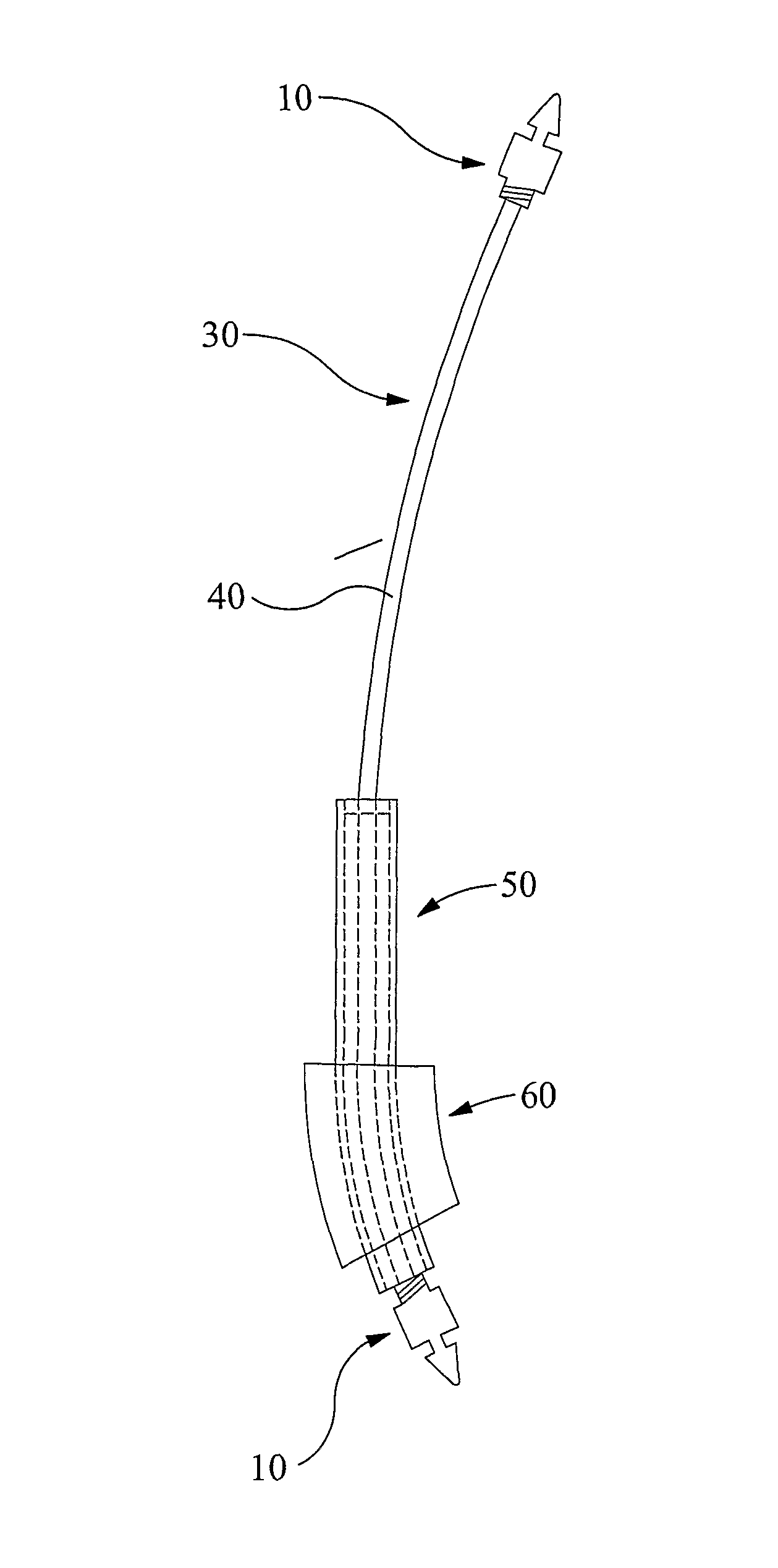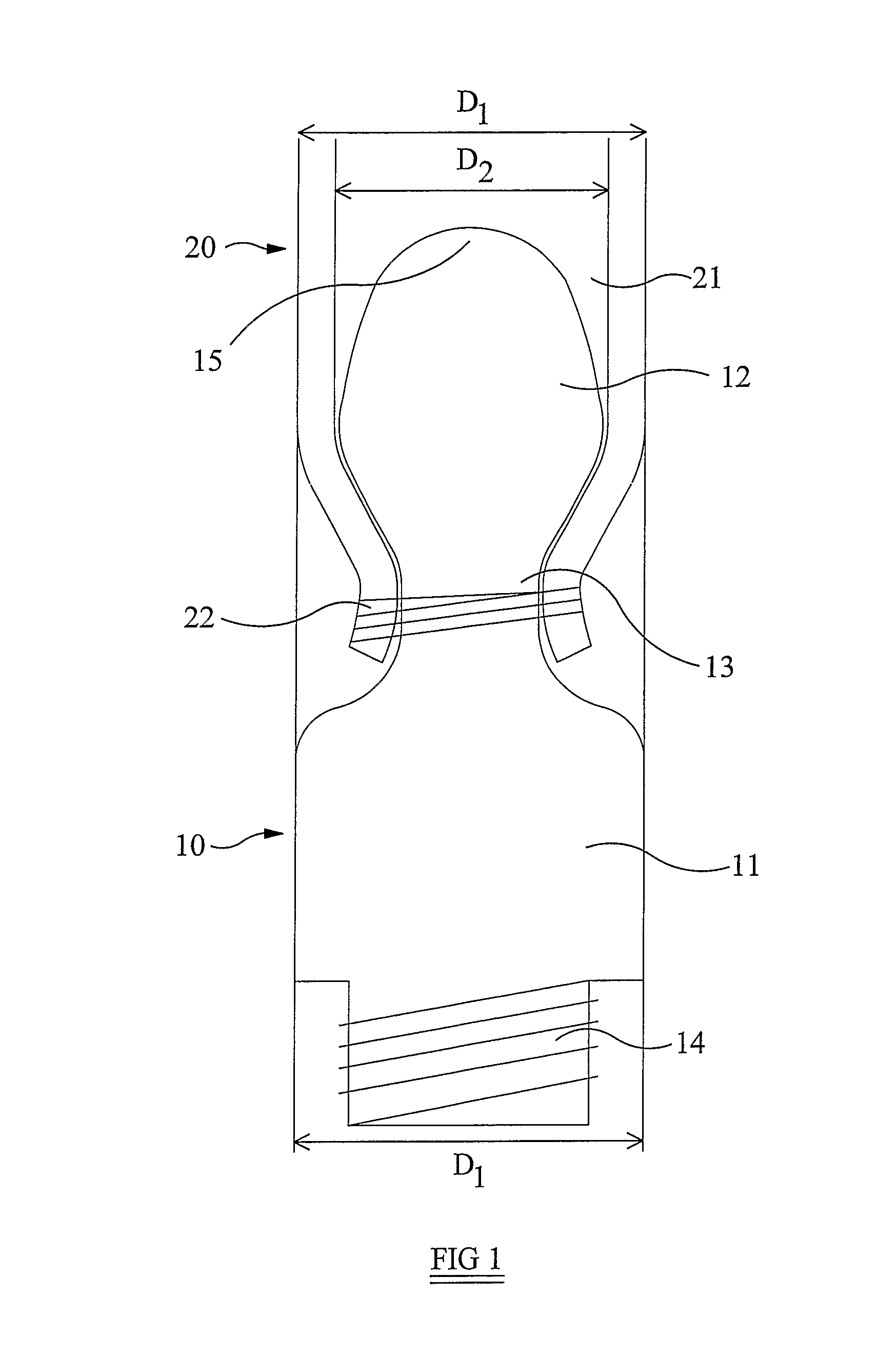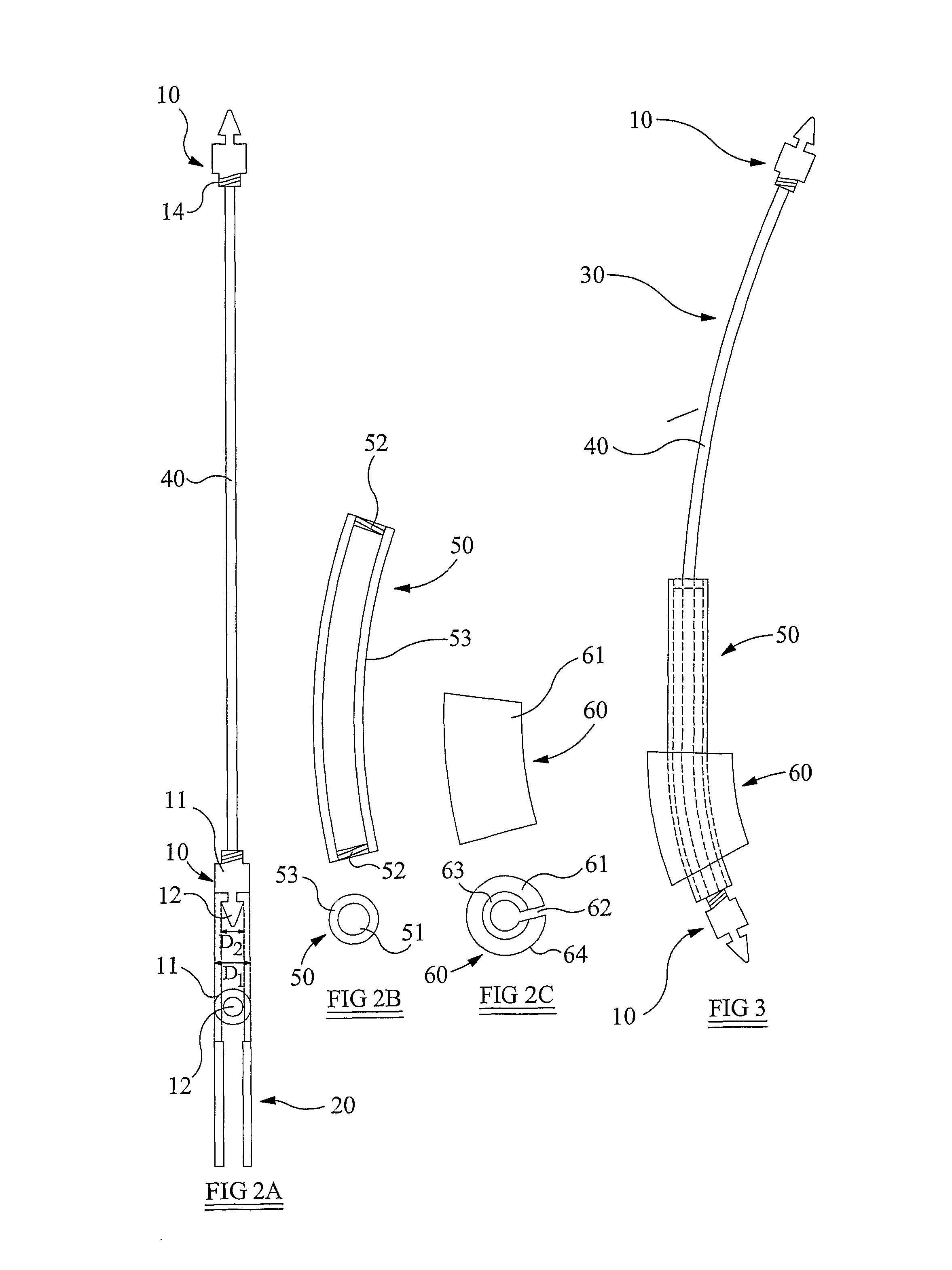Tunnelling instrument for subcutaneously placing an article, and method of use of said instrument
a technology of tunneling and articles, applied in the field of tunneling instruments, can solve the problems of increased risk of infection, reduced healing and incorporation rate of grafts, and tissue trauma inside the tunnel
- Summary
- Abstract
- Description
- Claims
- Application Information
AI Technical Summary
Benefits of technology
Problems solved by technology
Method used
Image
Examples
Embodiment Construction
[0075]Referring to the drawings, a tip 10 according to the first aspect of the invention is shown in FIG. 1. The tip 10 comprises an attachment means 14 in the form of a threaded shaft, a first portion 11 proximal to the attachment means 14, a second portion 12 distal to the attachment means 14, and a third portion 13 disposed between the first portion 11 and the second portion 12.
[0076]The attachment means 14 is configured for attaching the tip 10 to a tunnelling instrument 30, as shown in FIG. 3. The first portion 11 includes the greatest diameter D1 of the tip 10. The second portion 12 has a maximum diameter D2, which is less than the maximum diameter D1 of the first portion 11. The third portion 13, as illustrated, has a diameter of less than the second portion 12. Thus, the third portion 13 forms a waist in the tip 10, between the second portion, or head, 12 and the first portion, or body, 11.
[0077]As shown in FIG. 1, a tubular object 20 is attached to the tip 10. The tubular o...
PUM
 Login to View More
Login to View More Abstract
Description
Claims
Application Information
 Login to View More
Login to View More - R&D
- Intellectual Property
- Life Sciences
- Materials
- Tech Scout
- Unparalleled Data Quality
- Higher Quality Content
- 60% Fewer Hallucinations
Browse by: Latest US Patents, China's latest patents, Technical Efficacy Thesaurus, Application Domain, Technology Topic, Popular Technical Reports.
© 2025 PatSnap. All rights reserved.Legal|Privacy policy|Modern Slavery Act Transparency Statement|Sitemap|About US| Contact US: help@patsnap.com



